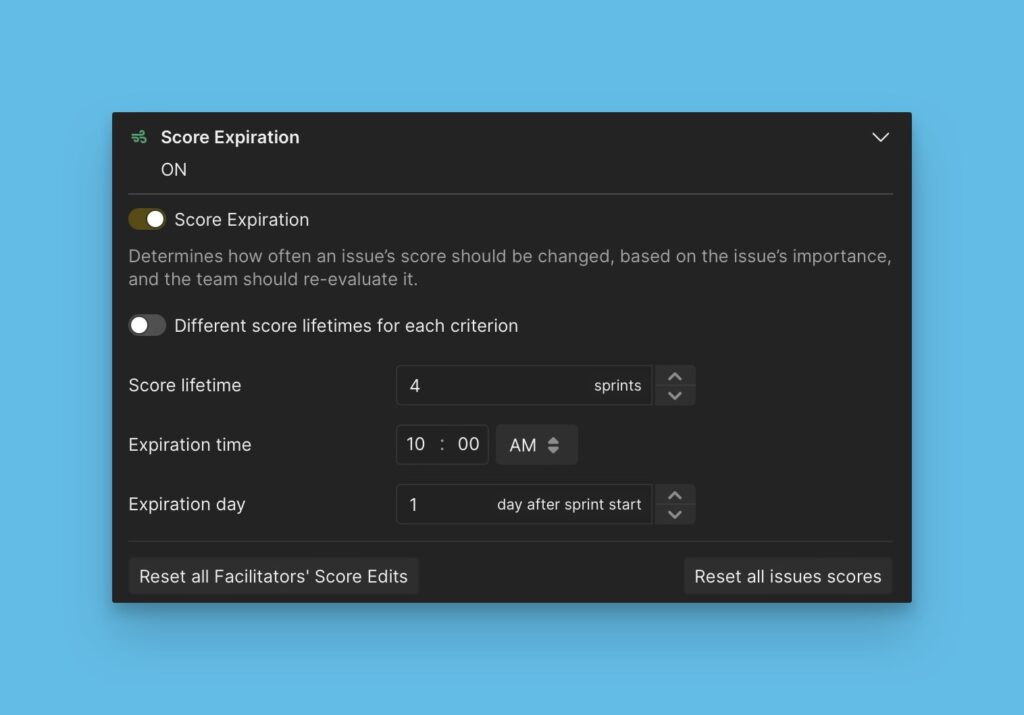We believe it’s important to build a prioritization habit to ensure that your priorities match your goals, which are constantly changing with each sprint.
Building a prioritization habit helps you to:
- Keep your priorities in line with your sprints’ goals.
- Always have your tasks prioritized before each sprint planning meeting.
To build a prioritization habit, you need to:
- Reset scores and re-evaluate issues in accordance with how often your goals change.
- Keep reminding your teammates to evaluate issues.
- Even send appreciation messages to your teammates who would have evaluated everything to keep them motivated.
In a prioritization board to access sprint planning settings heard to Evaluation Poker Settings.
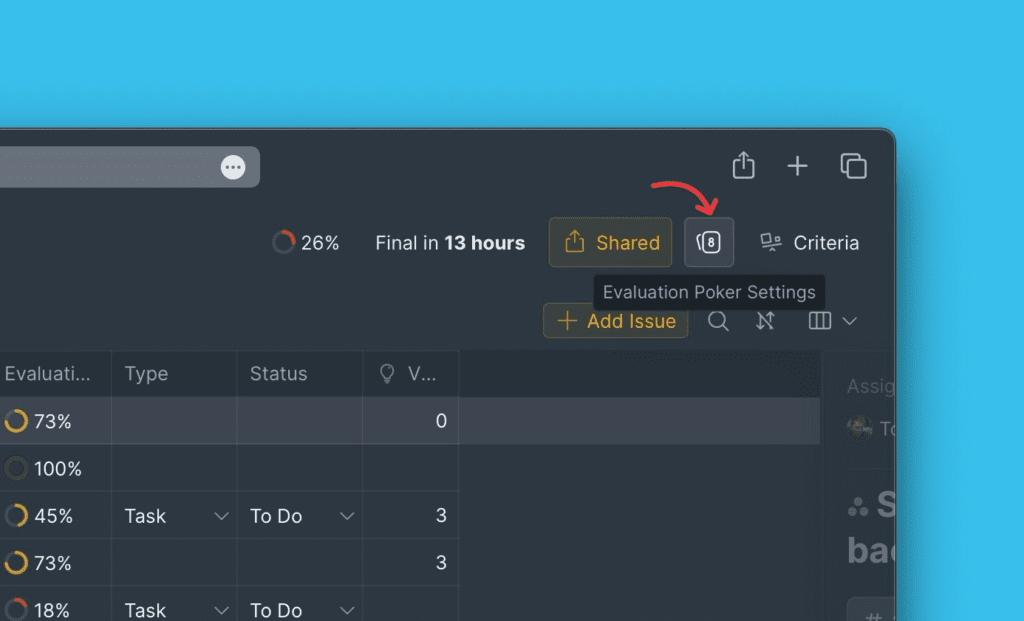
Sprint planning in Ducalis involves three steps:
- Start
- Reveal
- Final
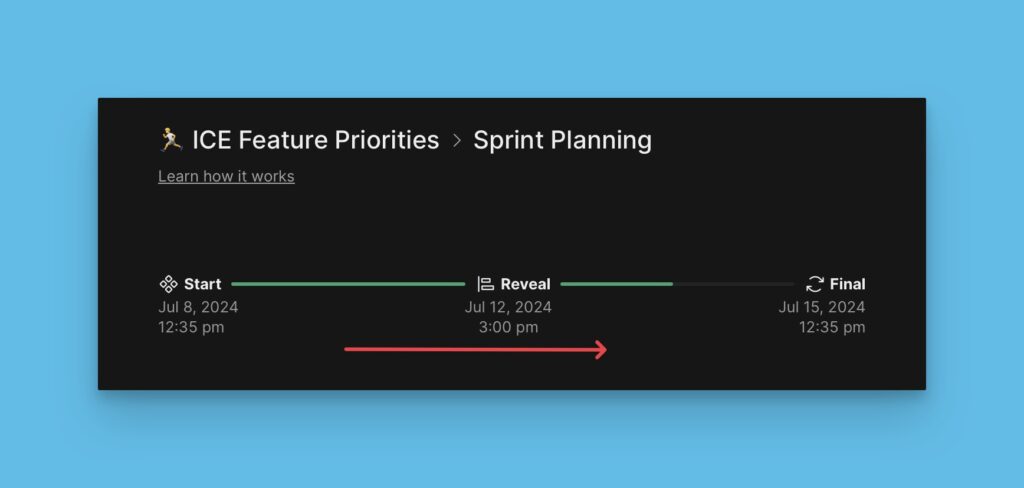
Start
This is the evaluation period. During this time, the team is estimating issues in the backlog for prioritization. An admin or owner of a board can set the length of the evaluation period.
Duration
- Set the duration it will take to get a new prioritization report. Choose how long you want your sprint plannings to be – by when you would want a fresh prioritization report.
- Choose the day of the week that you like to have your planning meetings.
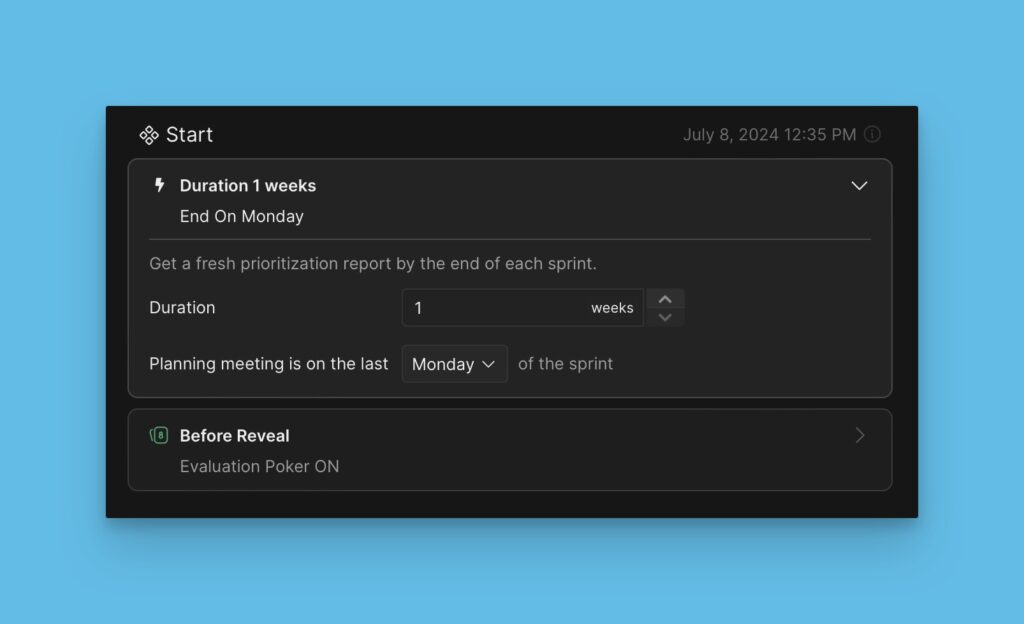
Evaluation Poker
You also have the option to switch on the Evaluation poker mode. This mode helps you to get unbiased prioritization results, as users’ scores are kept private until the evaluation period is over.
The two evaluation mode:
You can find the option to switch on Evaluation poker mode under the Start block.
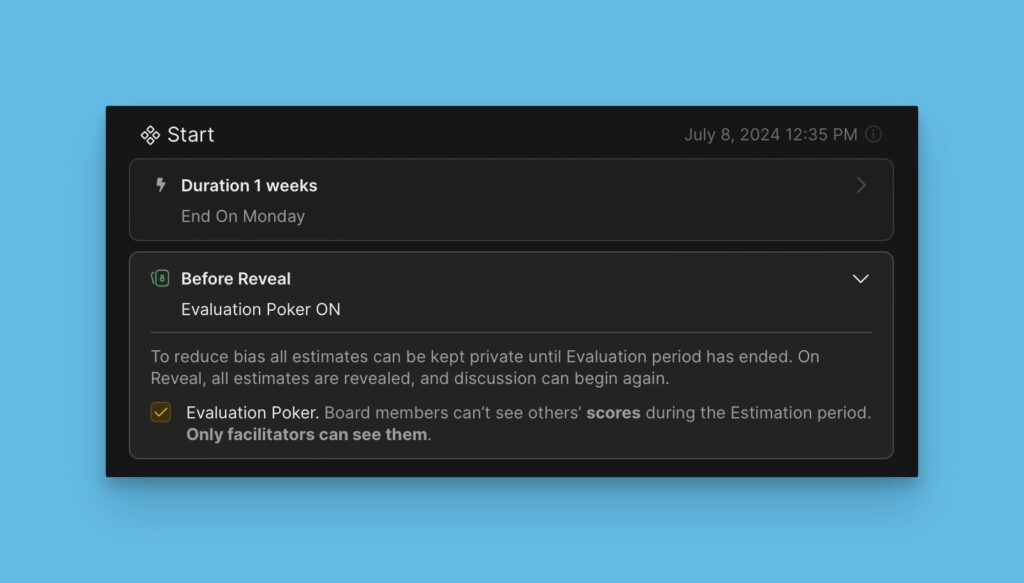
When the Evaluation poker mode is switched on, everyone’s scores are kept private until Reveal, but Facilitators can.

Reveal
If the Evaluation poker mode is on, you will be able to set how many days before the Final you would like the scores to be revealed for discussion.

Option to restrict users from updating their scores after the reveal. This will help block users from editing their scores after seeing other users’ scores.

Choose who can change the Final scores after the discussions. You can:
- Restrict everyone from editing the Final score.
- Allow everyone to edit.
- Allow only Facilitators to change.
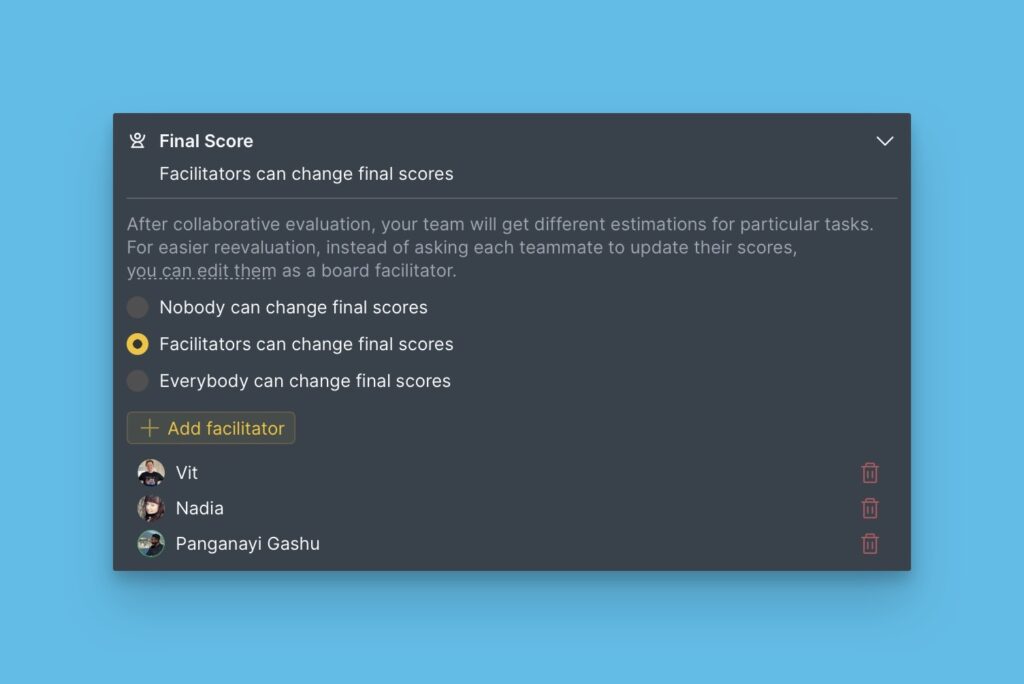
Choose how you want to inform your users about issues they still have to evaluate.
Write the reward message that the users who would have evaluated all the issues by the end of the sprint will receive.

Final
This is the final step of the sprint planning process. Final scores are set and nothing can be edited. The prioritization results will be ready.

For further sorting and filtering, you can sync scores to your task tracker.
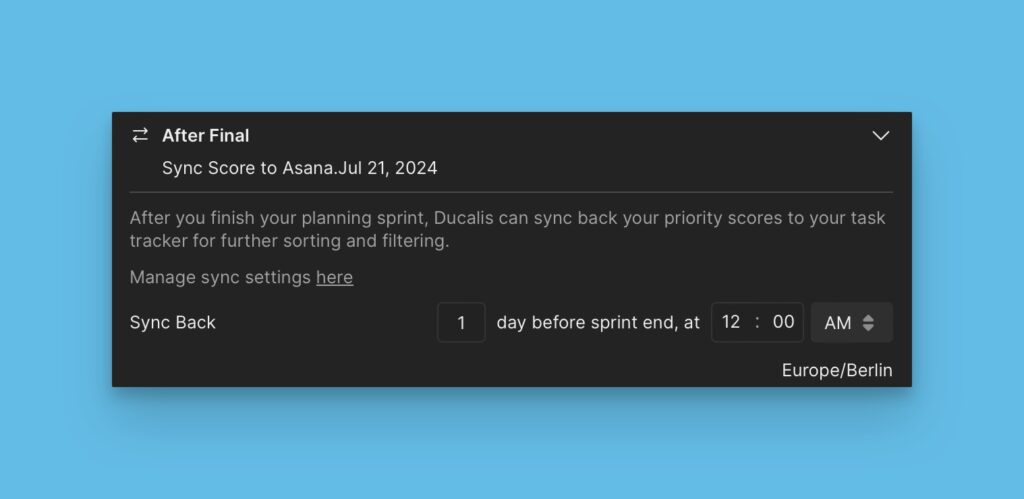
Under final, you will have a list of score backups that you can restore in case the scores expired when you still need them for a sprint.
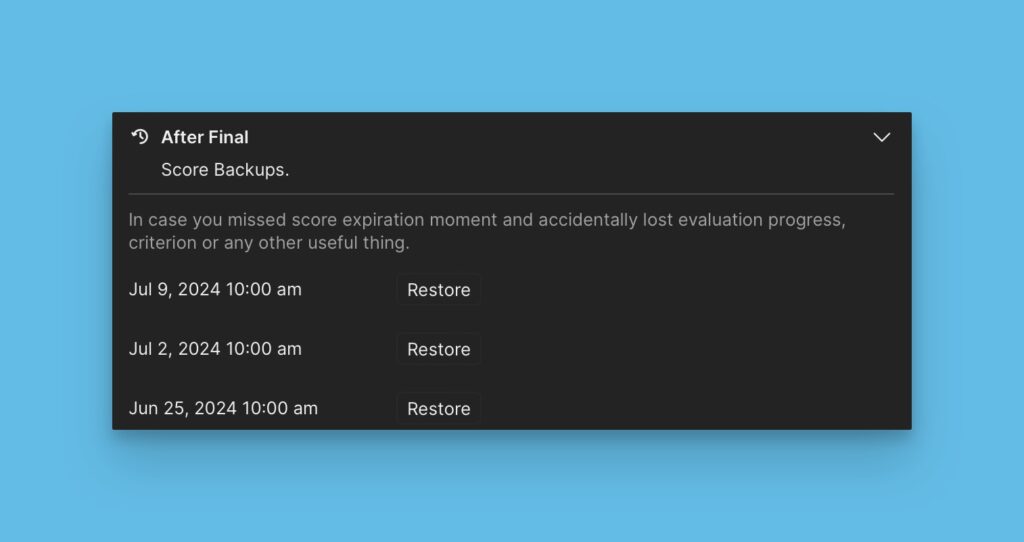
You also have the ability to set score expiration dates – when you want the current scores to be reset for your team to reevaluate the backlog again. This will help to ensure that your top priority tasks match your current goal.
